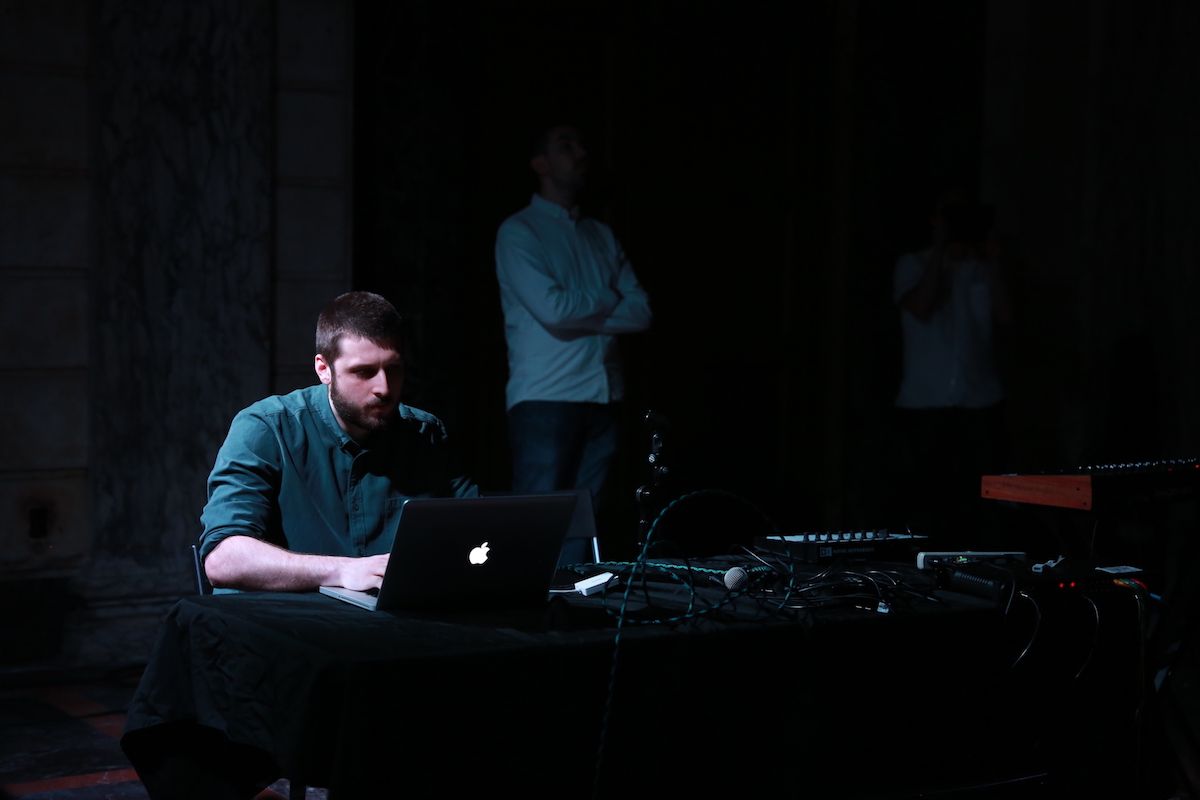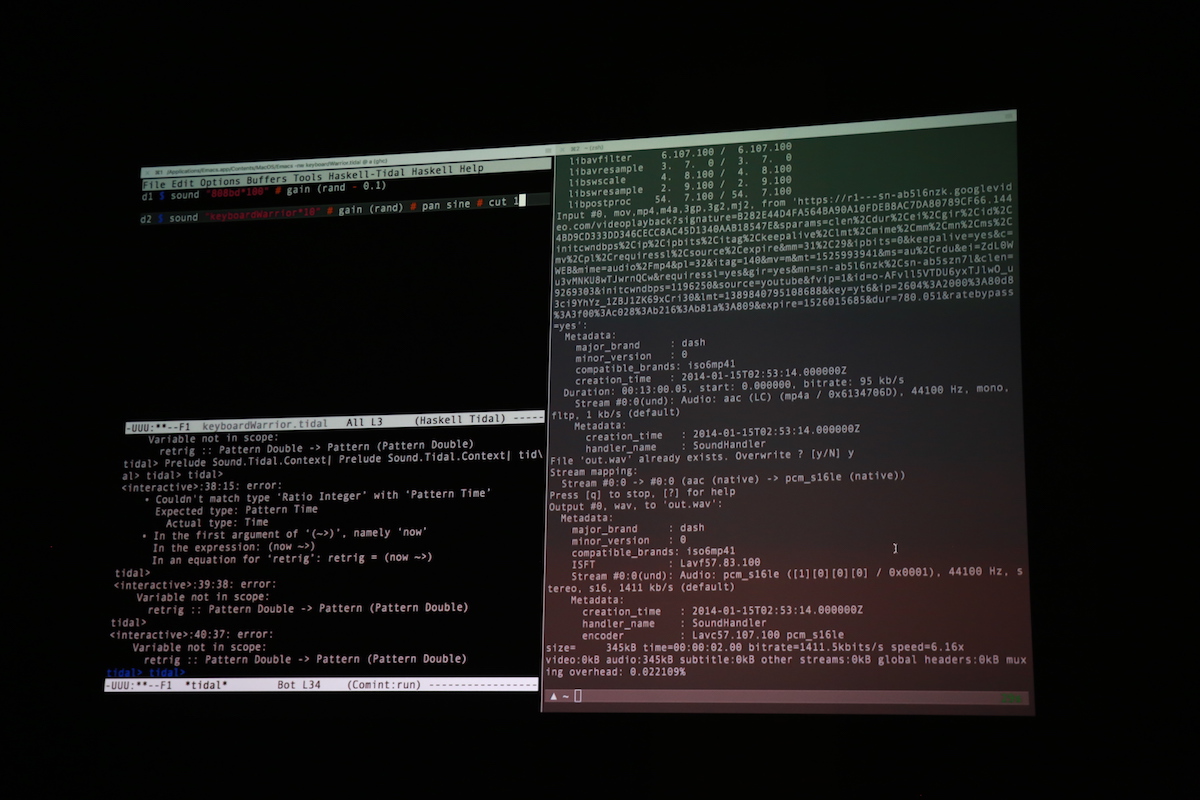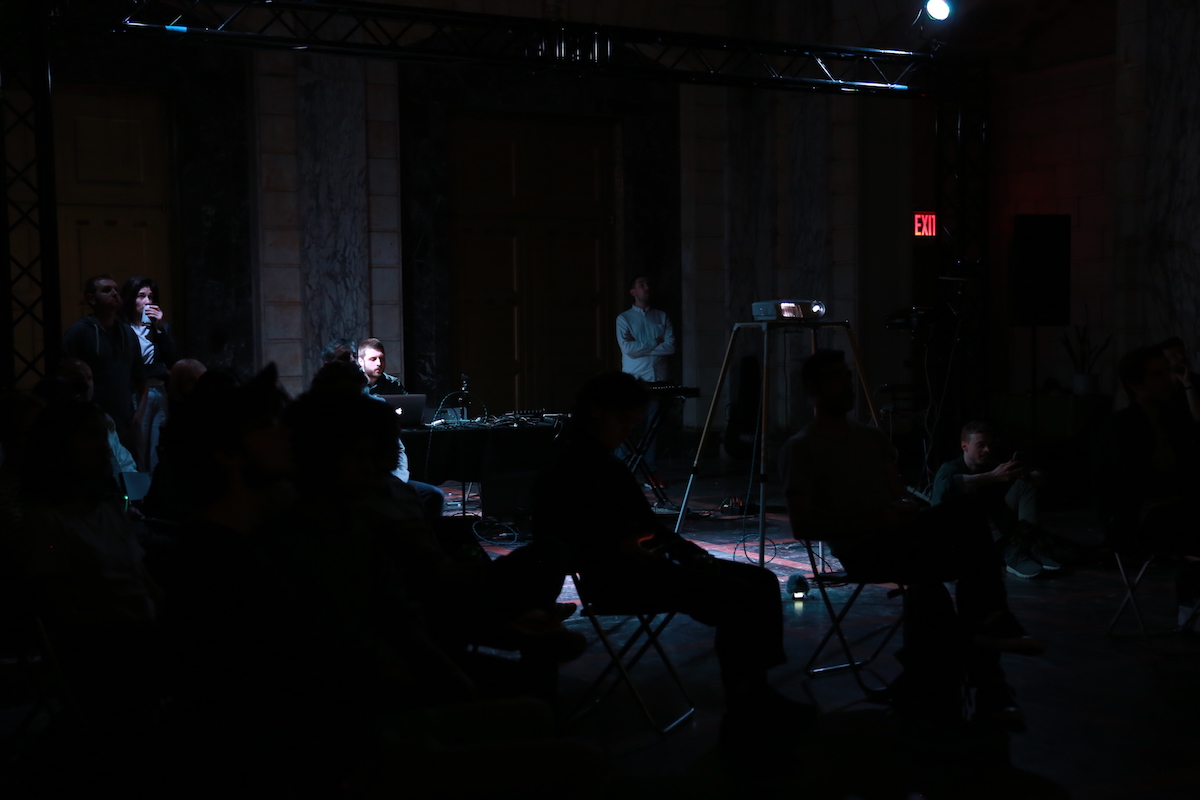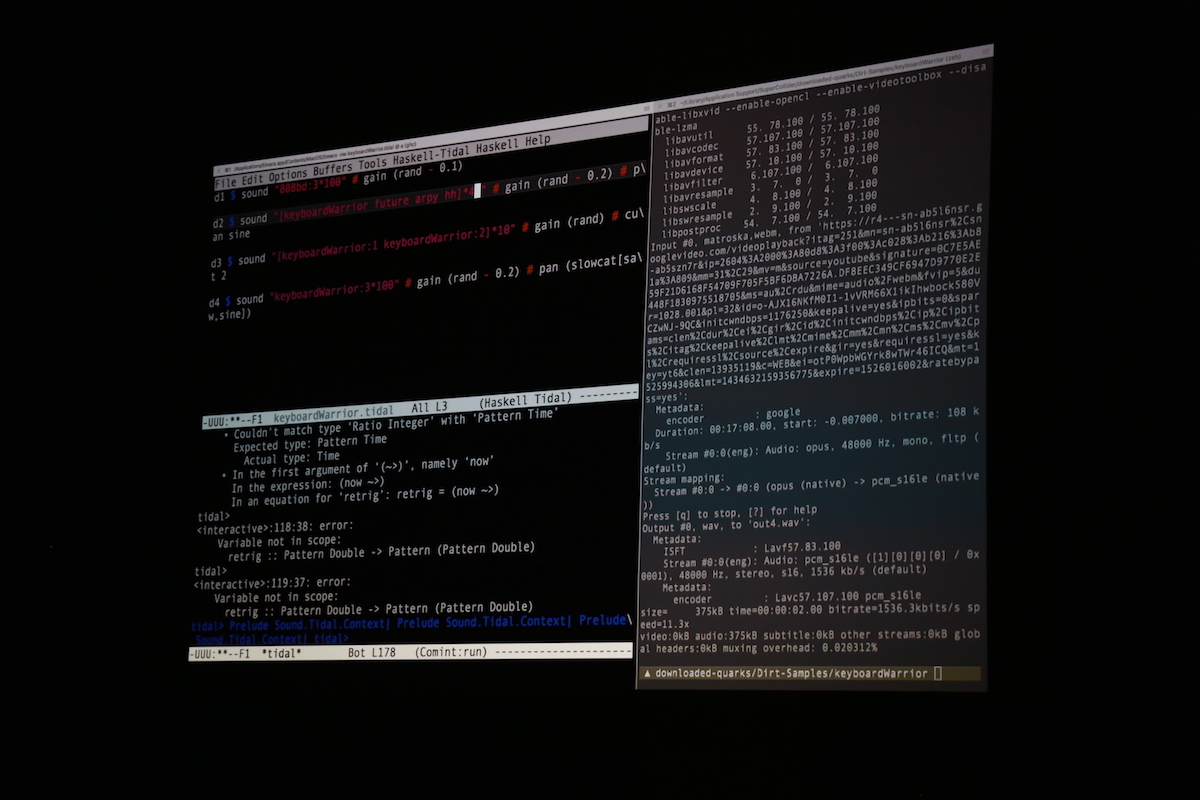




Keyboard Warrior
Performance
The proliferation of software marketed toward artists and designers often blurs the distinction between
textual programming and drag-and-drop GUI paradigms. Touch Designer, Max, and other visual programming
environments are meant to equip users with the capabilities that were, before, exclusively available to
those with fairly deep programming expertise. These tools seek to eliminate the technical barrier so
that the layperson can realize the full power of the modern computer in real-time performative
contexts.
This advancement in software design for creative fields raises some interesting questions:
Visual programming software tends toward proprietary; so what does it mean for artists for the barrier
to shift from technical to financial?
How is the user's creative decision-making affected by the UI/UX design choices of the developers of
these idiosyncratic, proprietary visual interfaces?
Keyboard Warrior is a live-coded a/v performance addressing these questions by examining the boundary
between the age old "hacking" and "defaults" approaches to being creative with
technology.
This performance tries to reveal the process of sound synthesis with code as cumbersome, confusing,
technically difficult. I want knowledgable performers to ask themselves why I don't just use Max, and I
want the general audience to think about the candid reality of what goes on behind the MacBook screen of
a computer-based musical performer, a situation in which the audience is typically oblivious to how
things are working and what the artist is actually doing.
The live-coding is done in TidalCycles, a Haskell-based textual language for synthesizing and sequencing
audio in real time. During the performance, I search Youtube for Max tutorial videos, copy the url, then
capture a small portion of audio from the video using ffmpeg to sample from TidalCycles. The TidalCycles
language is used from the Emacs text editor from the command line (Terminal). I tried to learn Emacs
basics as well as TidalCycles (using their tutorial) not long
before this performance. Is my lack of proficiency using these tools with such steep learning curves
recognizable by the audience?